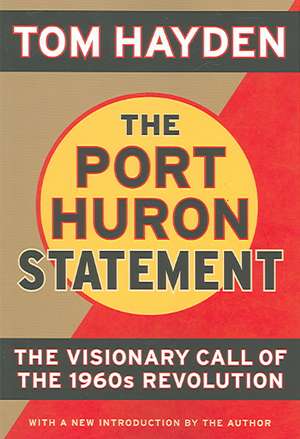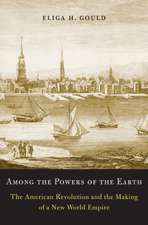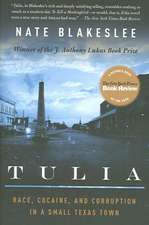The Port Huron Statement: The Vision Call of the 1960s Revolution
Autor Tom Haydenen Limba Engleză Paperback – 24 aug 2005
We
seek
the
establishment
of
a
democracy
of
individual
participation
governed
by
two
central
aims:
that
the
individual
share
in
those
social
decisions
determining
the
quality
and
direction
of
his
life;
that
society
be
organized
to
encourage
independence
in
men
and
provide
the
media
for
their
common
participation
.
.
."
—from
thePORT
HURON
STATEMENTFour
key
periods
in
American
history
have
most
influenced
what
America
is
like
today:
the
Revolutionary
War,
the
Civil
War,
World
War
II,
and
the
1960s.
No
document
better
frames
and
explains
the
1960s
than
thePORT
HURON
STATEMENT.
The statement was a generational call for direct participatory democracy in which Americans would have greater say over the decisions affecting their lives. It called for the extension of democratic principles to the workplace as well as the electoral arena. It opposed the dominance of the military-industrial complex with the hope that social movements could reform the Democrats as a party of progressive opposition. In its vision greater democracy would lessen individuals' alienation.
The manifesto's 1962 publication preceded the phenomena of the counter-culture, hippies and back-to-the-land. It is truly the intellectual roots of the social change of the 1960s and its impact is still being felt in 2005. In "The Big Lebowksi," the character played by Jeff Bridges claimed authorship; it was condemned by right-wing justice Robert Bork, recalled with nostalgia by Garry Wills and E.J. Dionne, and sections have been printed in countless readers on American history.
The statement was a generational call for direct participatory democracy in which Americans would have greater say over the decisions affecting their lives. It called for the extension of democratic principles to the workplace as well as the electoral arena. It opposed the dominance of the military-industrial complex with the hope that social movements could reform the Democrats as a party of progressive opposition. In its vision greater democracy would lessen individuals' alienation.
The manifesto's 1962 publication preceded the phenomena of the counter-culture, hippies and back-to-the-land. It is truly the intellectual roots of the social change of the 1960s and its impact is still being felt in 2005. In "The Big Lebowksi," the character played by Jeff Bridges claimed authorship; it was condemned by right-wing justice Robert Bork, recalled with nostalgia by Garry Wills and E.J. Dionne, and sections have been printed in countless readers on American history.
Preț: 157.13 lei
Nou
Puncte Express: 236
Preț estimativ în valută:
30.08€ • 32.68$ • 25.28£
30.08€ • 32.68$ • 25.28£
Carte tipărită la comandă
Livrare economică 21 aprilie-05 mai
Preluare comenzi: 021 569.72.76
Specificații
ISBN-13: 9781560257417
ISBN-10: 1560257415
Pagini: 192
Ilustrații: 30 B&W photos
Dimensiuni: 140 x 216 x 13 mm
Greutate: 0.23 kg
Editura: PublicAffairs
Colecția PublicAffairs
Locul publicării:Canada
ISBN-10: 1560257415
Pagini: 192
Ilustrații: 30 B&W photos
Dimensiuni: 140 x 216 x 13 mm
Greutate: 0.23 kg
Editura: PublicAffairs
Colecția PublicAffairs
Locul publicării:Canada
Notă biografică
Tom
Hayden,
who
drafted
thePort
Huron
Statementin
1962
when
he
was
21
years
old,
was
among
the
founders
ofStudents
for
a
Democratic
Society,
a
Freedom
Rider
in
the
segregated
South,
a
community
organizer
in
the
slums
of
New
Jersey,
an
opponent
of
the
Vietnam
War
who
was
indicted
by
Richard
Nixon,
and
eventually
served
in
the
California
Legislature
for
18
years.
He
currently
teaches
at
Occidental
College
and
writes
on
the
nature
of
social
movements
in
Los
Angeles.
He
is
the
author
of
nine
books,
includingTHE
LAST
GOSPEL
OF
THE
EARTH,THE
WHOLE
WORLD
WAS
WATCHING,andIRISH
HUNGER.The
New
York
Timescited
his
1988
book,REUNION,
as
one
of
the
best
of
the
year.











